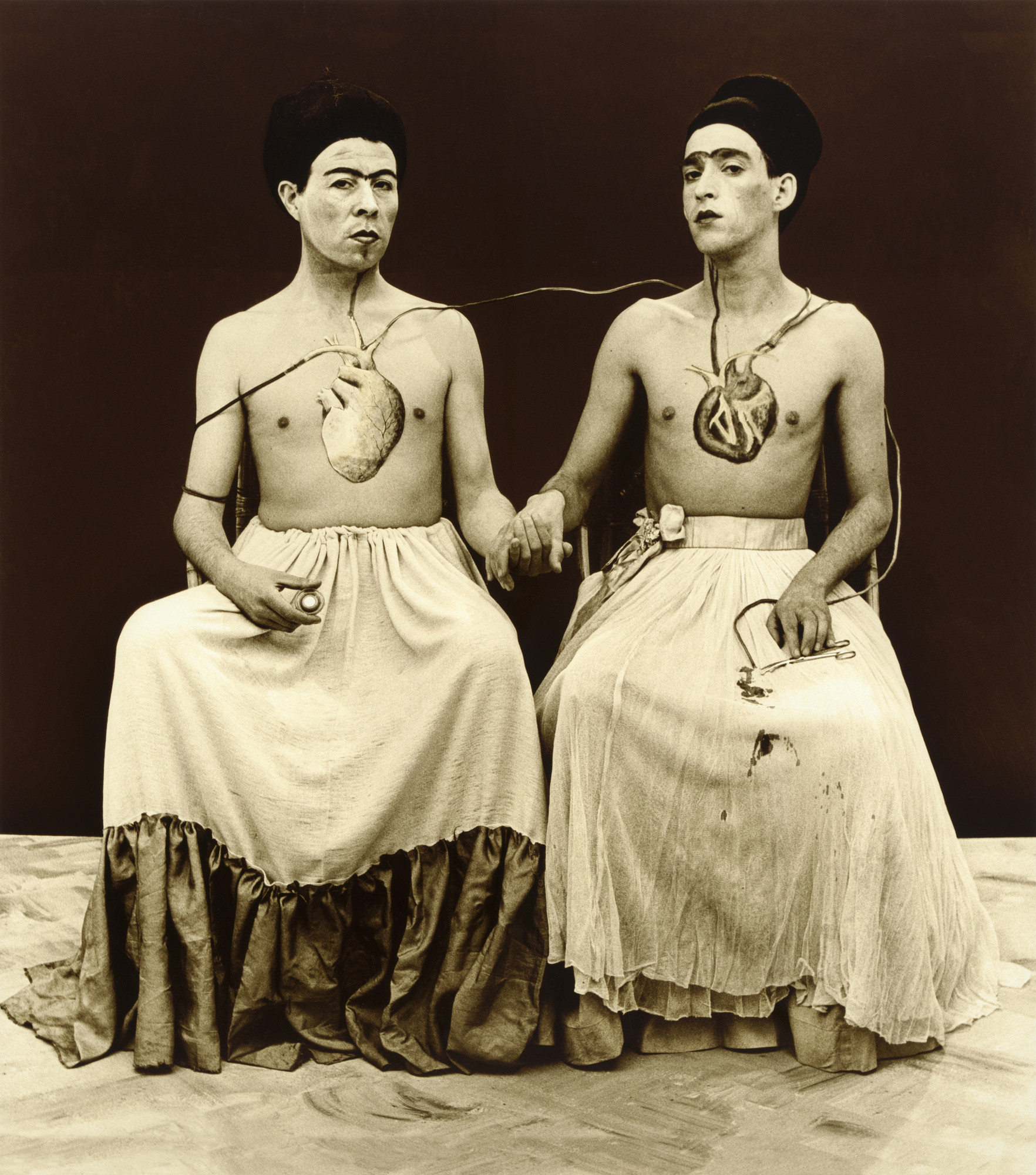Artist, Francisco Casas Silva (read by a voice actress): Hi, I'm Francisco Casas. I am an audiovisual artist.
Las Yeguas del Apocalipsis is a collective. We found that art is a way to rebel against the dictatorial systems that had been imposed on us. And at that time—I'm talking about the years 1986, ‘87, ‘88—with the discrimination for being homosexual, you would go out to the corner and people would yell horrible things, the bullying at school. But imagine that apart from this, AIDS arrives in Chile. Suddenly, it was no longer just being homosexual, but also being homosexual with AIDS—whether you had it or not.
So Pedro Lemebel and I decided to make this work in which we are bleeding to death because blood is always political.
Las Dos Fridas is a becoming of Frida Kahlo. It is not a reinterpretation. A reinterpretation is to copy something, reappropriate it, change it. I don't think we change anything here. What we do is connect with this brutal work by the artist Frida in which she depicts herself with an intravenous tube that joins her with a doppelganger. These tubes are cut, and blood runs down her skirt.
At first we tried to do it as a performance, the two of us connected by an IV tube—and all of this was in connection with AIDS and contagion. I called my friend, the photographer Pedro Marinello, and I told him to take a picture of us like this.
Pedro Lemebel looks forward and I look a little to the side. There is a tension. But also in this photo, if you look at it and compare it with the original painting, Frida Kahlo has in her hand a portrait of Diego Rivera. What Pedro has in his hand is a condom. It’s much more brutal, the multiplicity of readings that this causes within the time period.
But it’s a feeling that Frida had, which we felt too. And what's more, I still feel it.
